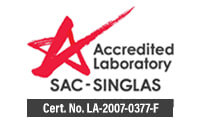Air Velocity (m/s) Indoor Standards
Air velocity is a peculiar variable that is able to affect both indoor air quality and health of the occupants inside these constructions. As air velocity affects temperature, humidity and rate of air renewal it is able to directly influence the overall air quality in the environment as well as the levels of contaminants and pathogens present in the building. However, to better understand how this variable should be controlled and maintained more information should be gathered.
What is Air Velocity?
Air velocity determines the speed in which cubic meters of airflow through a specific point, also being known as airflow or mass flow (m3/s) in a building. The airflow naturally occurs due to the existence of pressure gradients that push the air from higher pressure areas to lower pressure. This is how natural air currents occur outdoors and how the presence of wind can be explained.
In buildings, individuals can benefit from this natural convection through natural ventilation systems that involve windows, corridors, and doors which allow for a natural flow. Projects that value this low cost and energy free cooling systems are referred to as “green constructions” and rely on natural environmental conditions for both air renewal and temperature regulation within the building.
However, most buildings rely on artificial airflow systems such as air conditioners, exhaustions and more complex systems known as Heating, ventilation and air conditioning (HVAC) that distribute and regulate airflow throughout the building.
How can I measure air velocity?
Air velocity can be measured both with specific equipment and sensors that analyze the flow of air in a given space or by the internal sensors coupled with the HVAC systems installed in modern buildings.
Measuring air velocity considers the amount of air detected by the sensors throughout the day taking into account gradients in air pressure and air density that might occur within the building due to temperature differences that dissipate in a day. However, carrying out the measure can be quite complicated and verifying for dead zones and areas that might favor higher rates of ventilation should be avoided. In this case, relying on a qualified team is crucial for proper measurements of airflow indoors.
What are the health issues caused by air velocity?
Air velocity individually will affect the thermal comfort of individuals and can lead to excessive loss in temperature which impairs the immune system and might ease the onset of colds and hypothermia. However, with air velocity levels of air renewal indoors should also be taken into account as they influence directly several aspects that reflect on health issues that could be caused by both excessive and insufficient air renewal.
In case of insufficient air renewal individuals might notice an accumulation of airborne contaminants indoors varying from chemical products (such as formaldehyde, carbon monoxide, asbestos, and others) as well as accumulation of natural product (such as mold spores and other pathogens proliferating in the area). In this case, insufficient air renewal might cause:
- Skin, eye and nose irritation
- Shortness of breath
- Sharp increase in toxin exposal leading to neurological shock
- Increase in chemical exposal leading to suffocation and loss of consciousness
- Dizziness
- Headaches
- Loss of coordination
On the other hand, excessive renewal of indoor air may expose lead to a sudden drop in temperatures inside the building which can cause health issues varying from hypothermia to onset of cold, migraines, muscle pain, joint swelling in individuals with arthritis, among others.
The American Society of Heating, Refrigerating and Air-Conditioning Engineers (ASHRAE) Standard 62.1-2007 recommends that individuals in office spaces or closed commercial buildings be exposed to air renewal rates of 0.3 L/s.m2 minimum to ensure their health and safe operation.
How can I improve air velocity?
Air velocity indoors can be improved by manual or mechanical changes carried out in the recirculation systems provided. In the case of natural air circulation, air velocity can be adjusted by favoring a higher flow rate or a lower flow rate depending on the conditions necessary. This can be obtained by:
- Opening windows
- Installing natural ventilation systems
- Construction of buildings according to natural air flows
In cases of air velocity being adjusted mechanically, simple measures can be carried out to ensure the best air renewal rates, such as:
- Adjusting renewal rates in your HVAC
- Installing exhaustion systems throughout the building
- Installing fans
How can IAQ help?
IAQ is a SAC-SINGLAS accredited firm that can carry out a wide variety of assessments to determine the indoor air quality of your building. In this case, analyzing air velocity becomes a standard procedure to ensure that your air renewal is according to the Singapore SS554 Parameters Standards. Through a series of personalized equipment and devices, IAQ is able to assess the air velocity of your building, stablish the overall air renewal conditions and evaluate the presence of contaminants indoors allowing for a full assessment of the quality of your indoor air.
In certain cases, air renewal can be adjusted to higher values due to elevated levels of contaminants and chemicals in your indoor air which can be simultaneously detected by the IAQ consultants in a general assessment in your building. IAQ is also able to detect sources of contamination and carry out speciation of pathogens found in the building assuring that the airflow is adequate for the reduction and control of any source of contamination.
People also ask
- How do I get the best indoor air quality?
- How do I circulate air in my building?
- What causes poor indoor air quality?
- What are the four major indoor air pollutants?



